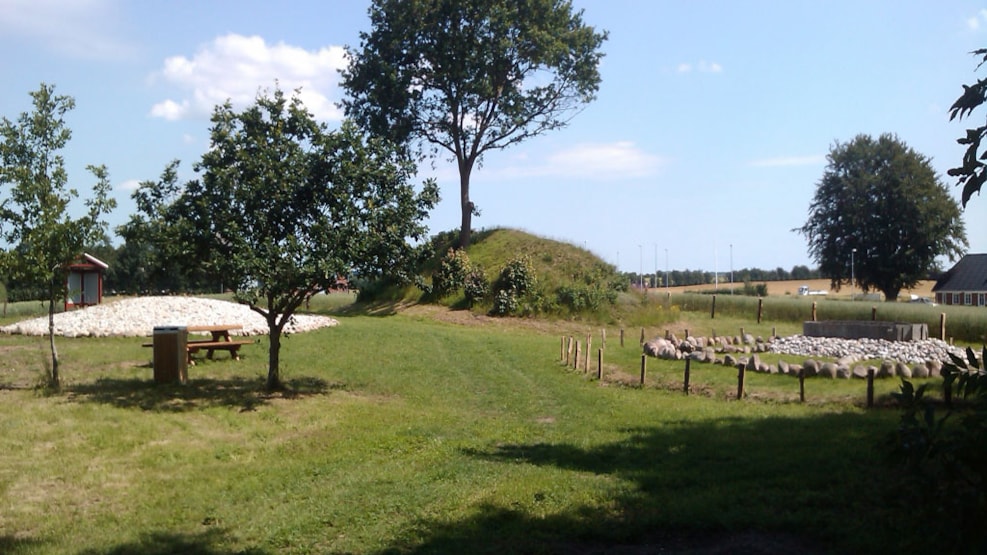
Hjulgraven
Close to Hærvejen is Hjulgraven in Hjordkær. An Ancient burial site from the Bronze Age, where the oldest facility consists of a so-called Wheel Grave.
The wheel pit in Hjordkær
In connection with a division into industrial plots, Haderslev Museum investigated the area here in 1980, because there were several plowed burial mounds. The largest mound was found to have been built in 4 stages, and had been used as a burial ground from the end of the Stone Age until well into the Bronze Age, with a different appearance for each burial.
The ancient burial site dates from the Bronze Age, where the oldest structure consists of a so-called Wheel Grave. It consists of a stone wreath with a diameter of approx. 10 m, from which 5 rows of stones are brought into the burial chamber in the middle. The wheel grave is the only known one of its kind in Denmark, and was moved 300 m south to its current location in a collaboration between Museum Sønderjylland and Aabenraa Municipality. This was done to make room for an industrial company.
When you cycle or walk on Hærvejen today, it is natural to take a break and visit the Hjulgraven in Hjordkær. It is very close to the route and is definitely worth a visit.
What is a burial mound?
A burial mound is a burial ground built over a burial site of earth, peat and stone. It can contain several graves. Most commonly, there is a primary grave in the center of the mound, but there can also be several secondary graves further up the mound. How the burial mound looks in terms of size and design is often linked to the status of the deceased.